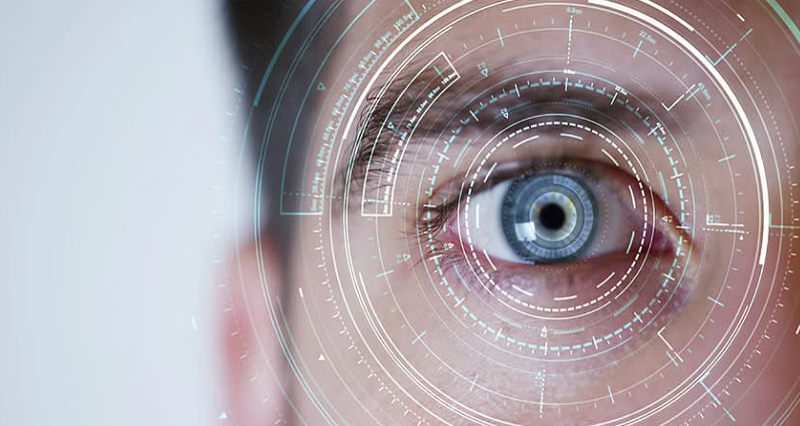
In today's digital age, image manipulation techniques have become increasingly sophisticated, allowing for stunning visual effects and seamless transitions. One such technique is image morphing, which enables the transformation of images from one shape, color, or texture to another while maintaining smooth and natural transitions. This article explores the concept of image morphing, various techniques used, tools and software available, applications, challenges, and the future of this fascinating technology.
Understanding Image Morphing
Image morphing is a process that involves transforming one image into another through a series of intermediate steps. The objective is to create a smooth transition between the source and destination images, where the transformation is not abrupt but rather appears as a gradual change. This technique is widely used in fields such as animation, special effects, and graphic design.
Checkout the 10x Engineers who are passinate about AI in Image Processing https://10xengineers.ai/
Techniques for Image Morphing
There are several techniques used for image morphing, each with its unique approach to achieving seamless transitions. Let's explore three popular methods:
Feature-Based Image Morphing
Feature-based image morphing focuses on specific features or landmarks present in the source and destination images. By defining corresponding points, such as facial features or shape contours, the algorithm calculates how these points should transform from one image to another. This method ensures that the important characteristics of the images are preserved during the morphing process.
Mesh Warping Image Morphing
Mesh warping, also known as triangulation-based morphing, divides the source and destination images into a grid of interconnected triangles. By manipulating the vertices of these triangles, the algorithm morphs the image smoothly. This technique is particularly useful when dealing with images that have irregular shapes or complex textures.
Optical Flow Image Morphing
Optical flow image morphing relies on the concept of motion estimation. It analyzes the movement of pixels between the source and destination images to determine how they should transform. By calculating the optical flow field, the algorithm generates intermediate frames that seamlessly connect the two images, creating a fluid animation-like effect.
Tools and Software for Image Morphing
Several tools and software are available to facilitate image morphing processes. These tools often provide intuitive user interfaces, allowing users to easily define source and destination images, select morphing parameters, and preview the resulting morph. Some popular software includes Adobe After Effects, GIMP, and Morph Age.
Applications of Image Morphing
Image morphing finds applications in various fields. In entertainment, it is commonly used in movies and video games to create realistic transformations and visual effects. It also plays a crucial role in facial animation and character development. Additionally, image morphing has applications in medical imaging, virtual reality, and even artistic expression.
Challenges in Image Morphing
While image morphing offers incredible possibilities, it also comes with its own set of challenges. One major challenge is preserving realism during the morphing process. It requires careful attention to details such as lighting, texture, and shape preservation. Additionally, handling complex images or large datasets can be computationally intensive, requiring significant processing power and time. Another challenge is maintaining consistency in the morphed images, ensuring that the transitions appear smooth and natural without any distortions or artifacts.
Future of Image Morphing
As technology continues to advance, we can expect further developments in image morphing techniques. Researchers are exploring new algorithms and approaches to improve the quality and realism of morphed images. With the increasing availability of powerful hardware and machine learning algorithms, image morphing is poised to become even more sophisticated and accessible to a wider audience.
The future of image morphing holds exciting possibilities in various domains. It can revolutionize the way we create visual effects in movies, enhance virtual reality experiences, and provide innovative tools for artists and designers to express their creativity. The continuous evolution of image morphing algorithms and software will undoubtedly unlock new applications and push the boundaries of what is possible.
Conclusion
Image morphing is a captivating technique that enables the seamless transformation of images with smooth transitions. Through feature-based morphing, mesh warping, and optical flow, images can be transformed in ways that preserve their essential characteristics. With the availability of user-friendly software and tools, image morphing has become more accessible to a broader audience.
While challenges such as realism and computational complexity persist, ongoing advancements in technology and research are addressing these issues. The future of image morphing holds immense potential, promising enhanced visual effects, improved virtual reality experiences, and expanded artistic possibilities.
FAQs (Frequently Asked Questions)
-
What is image morphing? Image morphing is a technique that transforms one image into another through a series of intermediate steps, creating smooth transitions between them.
-
What are some popular tools for image morphing? Popular tools for image morphing include Adobe After Effects, GIMP, and Morph Age.
-
Where is image morphing used? Image morphing finds applications in fields such as entertainment, medical imaging, virtual reality, and artistic expression.
-
What are the challenges in image morphing? Challenges in image morphing include preserving realism, handling complex images, and ensuring smooth transitions without distortions or artifacts.
-
What does the future hold for image morphing? The future of image morphing looks promising, with advancements in algorithms and hardware expected to improve the quality and accessibility of morphing techniques.